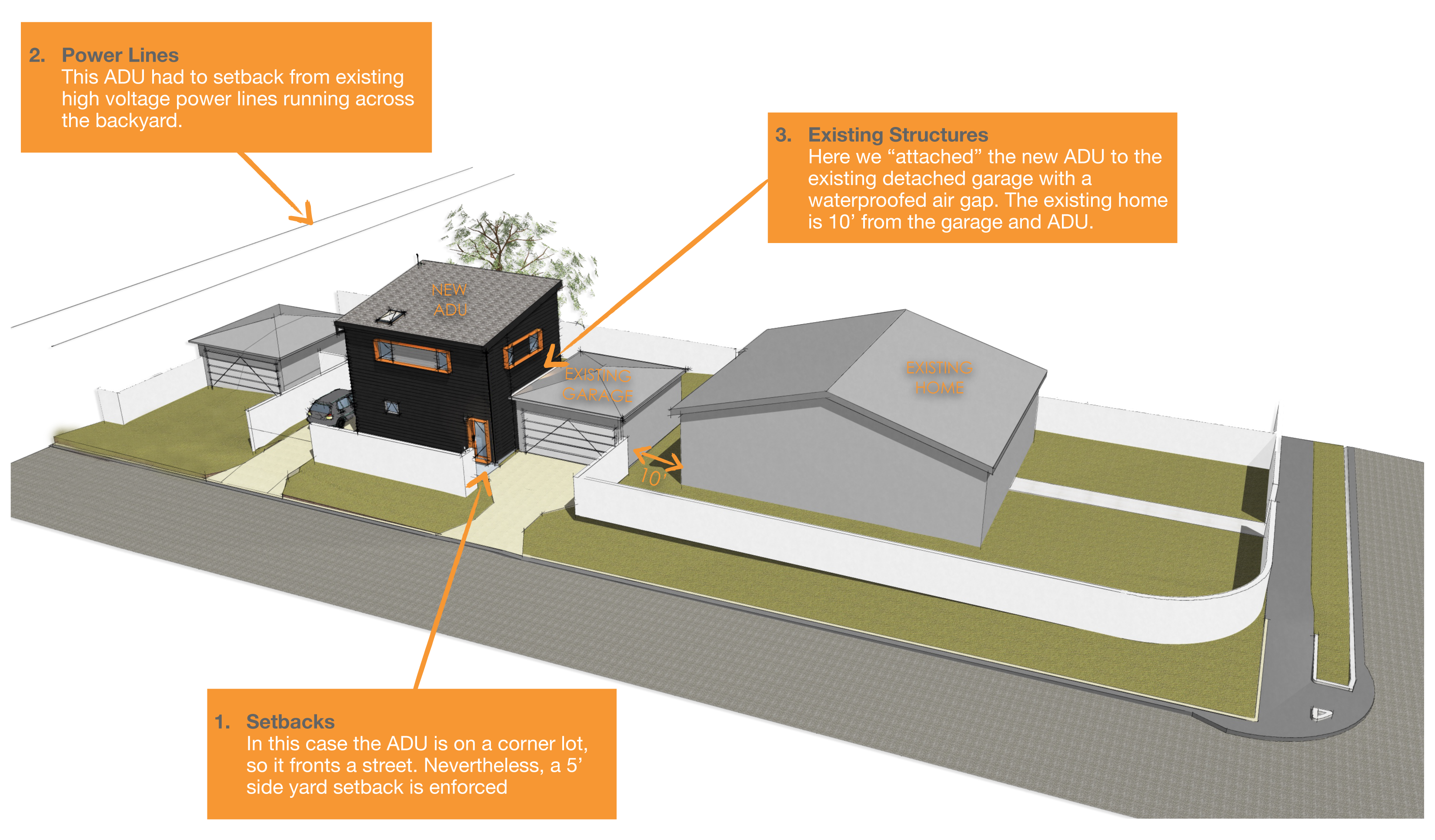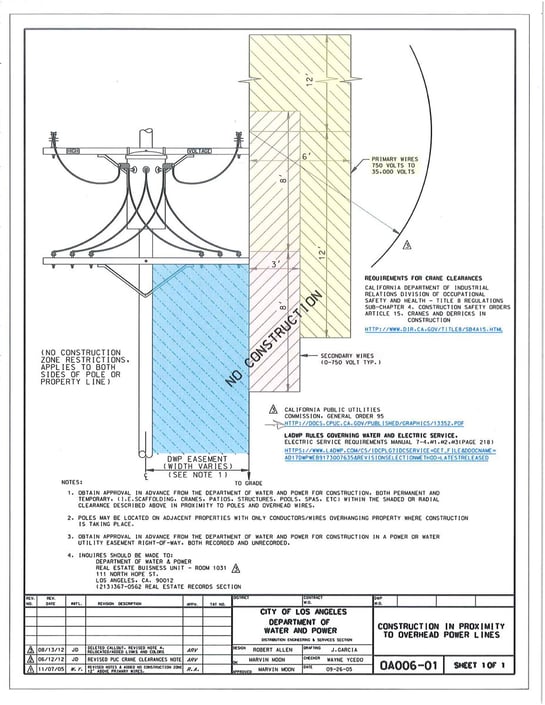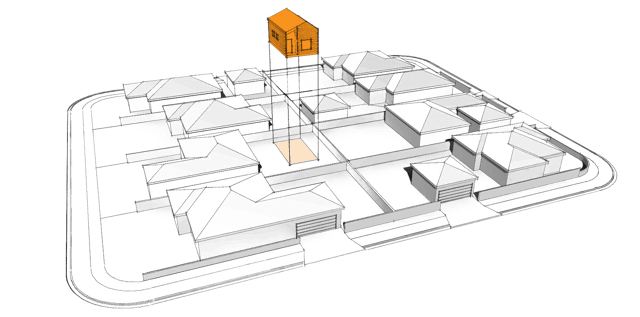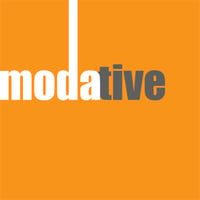
You've started researching Accessory Dwelling Units (ADUs), a.k.a. Granny Flats to see if they make sense for you and your property, but before you get into the specifics of ADU types and sizes, it's critical you know these three property issues:
1. Setbacks
Setbacks are simply the required space between a structure and your property line. These zoning rules are in place for your (fire) safety and to allow for proper light and air access between you and your neighbors. All good things.
In the (single family home) R1 zone in Los Angeles, the setbacks that matter most for an Accessory Dwelling Unit are your side and rear yard setbacks. Let's take a look at the typical setbacks for both a primary home and an ADU on an R1 zoned lot in City of LA:
| Setback | Primary Home | ADU (Accessory Structure) |
| Side | 5 feet* | 5 feet* (same as primary home) |
| Rear | 15 feet | 5 feet |
* The real rule reads: '10% lot width < 50 ft.; 5 ft.; 3 ft. min. + 1 ft. each story over 2nd", but most properties are over 50' wide, so 5' is most common.
So, it is pretty simple really. In Los Angeles, you can typically place a Granny Flat five feet from the side and rear property lines. However, there are other issues (that we'll get into) that can change these setbacks.
2. Power Lines
Those unsightly power lines that run across many backyards in Los Angeles can cause major issues with ADU placement. If you have power lines running across your yard, chances are you are lucky enough to have a Public Utility Easement in your yard. LADWP has strict requirements for how close your new structure can be to these easements and high voltage power lines. This can get a bit tricky, but here are the basics:
- If your proposed structure is more than 10' from the easement, no clearance is required.
- If your proposed structure is less than 10' from the easement, an encroachment permit is required from LADWP. This is not a big deal. It just takes time.
- To get an encroachment permit, you must prove that the structure is outside of certain clearances as shown this handy diagram. These rules can be confusing, which is where we come in.
How we handle your power line issues at Modative |
| With the help of a surveyor, we 3D model the power lines then virtually test how close we can get your ADU to the power lines within the code requirements, giving you the best possible and safest ADU placement. |
. Note: This handy diagram is from LADWP. It is subject to change at any moment. Please consult a professional to verify how power lines may impact your property. We can't have anyone getting electrocuted.
Note: This handy diagram is from LADWP. It is subject to change at any moment. Please consult a professional to verify how power lines may impact your property. We can't have anyone getting electrocuted.
3. Existing Structures
Two existing structures in particular - the existing home and detached garage. It is pretty simple really. Due to fire code, the Accessory Dwelling Unit must either be attached to the existing home/garage or be separated by 10 feet. Since we focus on providing you new detached ADUs here at Modative, we have found a few creative ways to make this work:
- The simplest, if possible, is to provide 10 feet between your ADU and your existing house or detached garage.
- However, this is not always possible on tight sites, so we often "attach" the new ADU to either the home or garage with a small roof structure, storage room or a small air gap with waterproofing at the top and sides.
Finding the right place in your backyard for an ADU while working around setbacks, power lines and existing structures can be a complex undertaking, but we love these little puzzles. Let us help you determine if your property works for an ADU.








